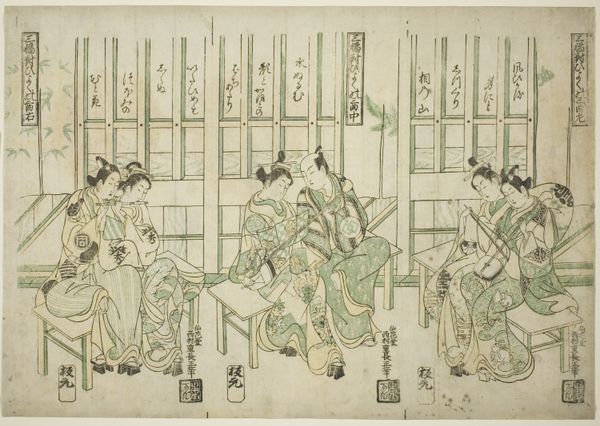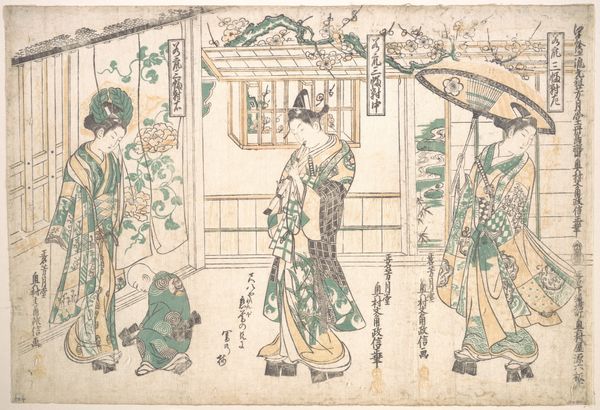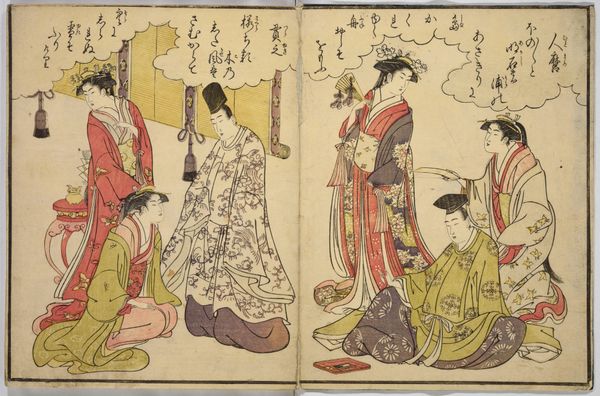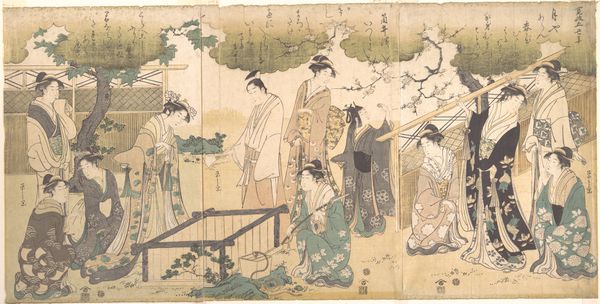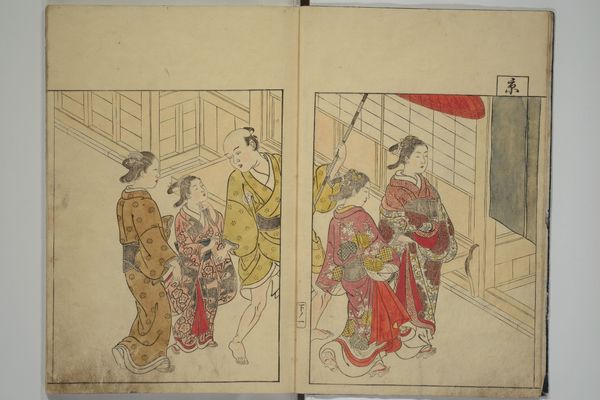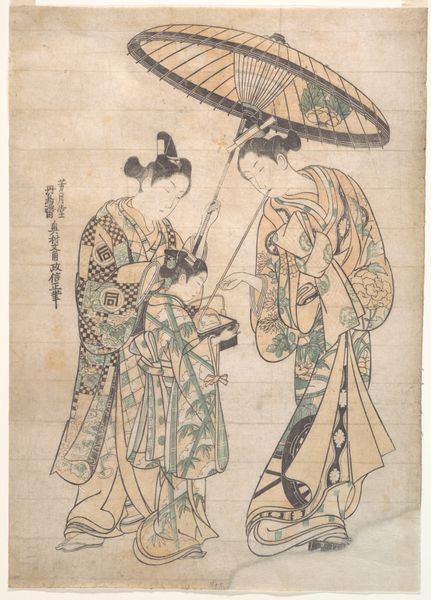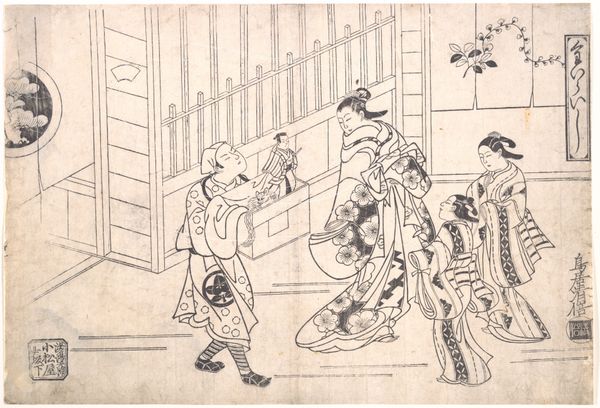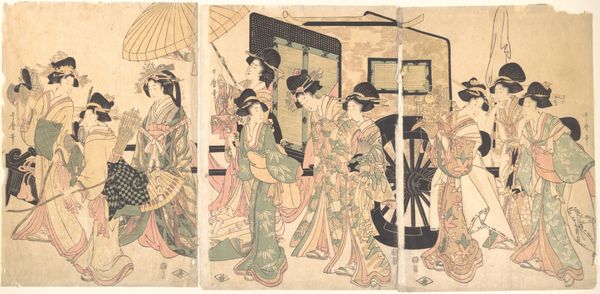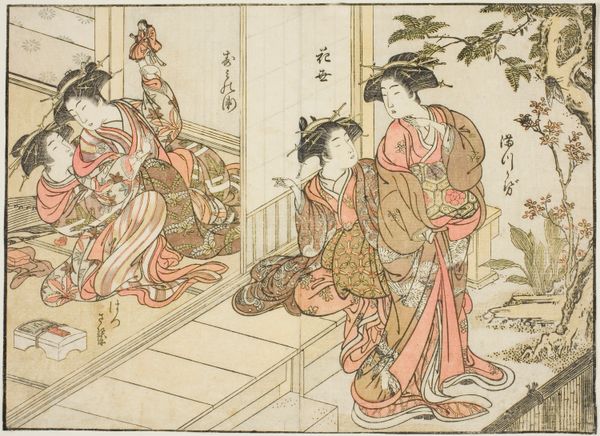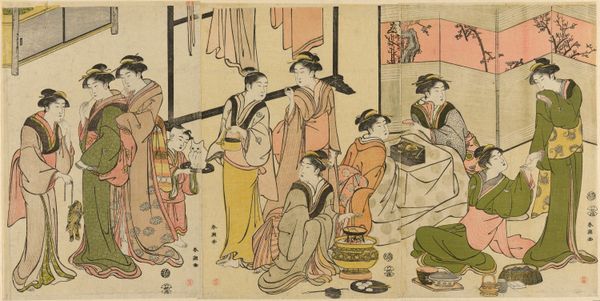
Courtesans Drawn in Osaka style (right), Kyoto style (center), and Edo style (left), from "Courtesans of the Three Capitals: A Set of Three (Sanga no tsu keisei sanpukutsui)" c. 1748
0:00
0:00
#
portrait
# print
#
asian-art
#
ukiyo-e
#
genre-painting
Dimensions: 30.0 × 44.0 cm
Copyright: Public Domain
Editor: This is "Courtesans Drawn in Osaka style, Kyoto style, and Edo style," a print by Okumura Masanobu, created around 1748. The composition strikes me as deliberately separated – distinct groups of figures, each seemingly in its own little world. How would you interpret that arrangement? Curator: Formally, observe how Masanobu divides the pictorial space into these distinct, almost compartmentalized areas. Note the subtle variations in line weight and color application that further define each grouping. Are we meant to perceive these divisions as purely representational, or might they suggest a deeper structural commentary? Editor: It’s interesting you point that out! They seem sectioned, but they’re also linked through a consistent colour palette and overall aesthetic. Does that tension between separation and cohesion tell us something about the print's message? Curator: Consider how the varying regional styles – Osaka, Kyoto, Edo – are visually presented. Each section highlights particular aesthetic preferences of the time. Is the artist using composition to express regional distinctions, or is there a visual harmonizing happening despite these differences? Editor: I guess the fact that they’re all clearly ‘courtesans’ links them thematically, and you’re right – the green colour scheme flows through the artwork as well, regardless of location or style. So is he drawing on this unifying colour? Curator: Precisely. The recurring green tonality serves as a key visual anchor. Do you find the artist leans towards simplicity or complexity in his representation of clothing? Editor: The fabric designs are really busy – there are so many small shapes happening, so I think complex. What about those blocks of text – do they feature into the structure? Curator: The calligraphy, while informational, it also serves as a textural and compositional element, balancing the figuration. The placement contributes to the overall structure and balance of the work. How does recognizing those individual elements impact the way you see this piece now? Editor: I now think the whole artwork has a pleasing flow that is quite clever. What I originally perceived as fragmented is deliberately and successfully harmonized. Curator: And with that, our exploration of Masanobu's interplay between form and representation concludes.
Comments
No comments
Be the first to comment and join the conversation on the ultimate creative platform.
